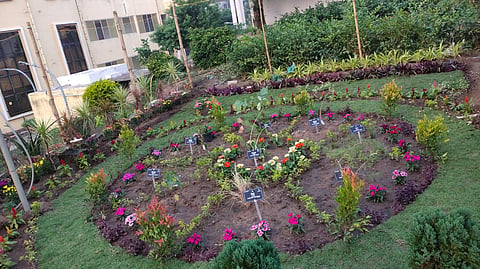Srimandir’s flower worry may end soon
BHUBANESWAR: Regular supply of flowers and aromatic plants needed for rituals at the Shri Jagannath temple at Puri may no longer be a reason of worry if things go as planned. The Council of Scientific and Industrial Research’s National Botanical Research Institute (CSIR-NBRI), Lucknow, has evinced interest in making the job easier for the temple.
The CSIR-NBRI is in talks with the Shree Jagannath Temple Administration (SJTA) to promote the cultivation of flowers and aromatic plants that will be specifically used for rituals of the Trinity at the Srimandir. It has already developed a garden called ‘Nilachakra Nabagraha’ at the Harishankar temple near Neelachal Bhakta Nivas at Puri. The garden has herbal and flower plants that are related to nine ‘grahas’ (planets) and used for temple rituals. The garden is in the shape of ‘Neelachakra’ and will be inaugurated by the director general of CSIR-NBRI N Kalaiselvi along with SJTA officials on Sunday.
Mission director of Floriculture Mission and director of CSIR-NBRI Dr Ajit Kumar Shasany said the national body, which is appointed by the Centre for promotion of flower farming across the country, has proposed the SJTA look into the regular supply of flowers and aromatic plants to the temple through farmers of the district by helping them take up floriculture, specific to the temple rituals.
“Temples are big markets for flowers and herbal/aromatic plants and their by-products. We have been developing flower clusters near temples like Goraknath in UP, Shirdi in Maharashtra, Biswanath in Benaras and Meenakshi temple in TN, depending on the agro-climatic conditions. In Odisha, we have proposed to set up a similar cluster for Srimandir,” he said.
Shasany said NBRI plans to promote floriculture entrepreneurship in a big way. People who have farms near Puri temple can grow flowers and plants that the temple needs on a daily basis and get much higher returns than they do with traditional crops. “We will help them with planting materials, technology and hand-holding support,” he said.
The CSIR-NBRI is currently helping one farmer near Baba Barala Balunkeswar temple at Barala village, 26 km away from Puri. He is growing different varieties of ‘Tulasi’ that are being supplied to the temple. It has also helped him set up a distillation plant in the village for the production of Tulasi oil.
It had last year developed four flower clusters in Odisha - Nabarangpur, Koraput, Nischintakoili in Cuttack and Nimapara. Each of these clusters has 15-acre to 20-acre land. There are 13 to 20 farmers involved. The flowers grown here are marigold, chrysanthemum, jasmine, rose and rajanigandha (tuberose).In the last eight years, NBRI has developed 44 clusters of aromatic/herbal plants in 22 districts of the state.

